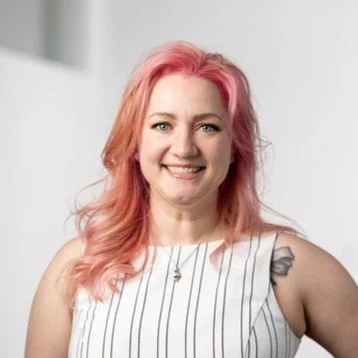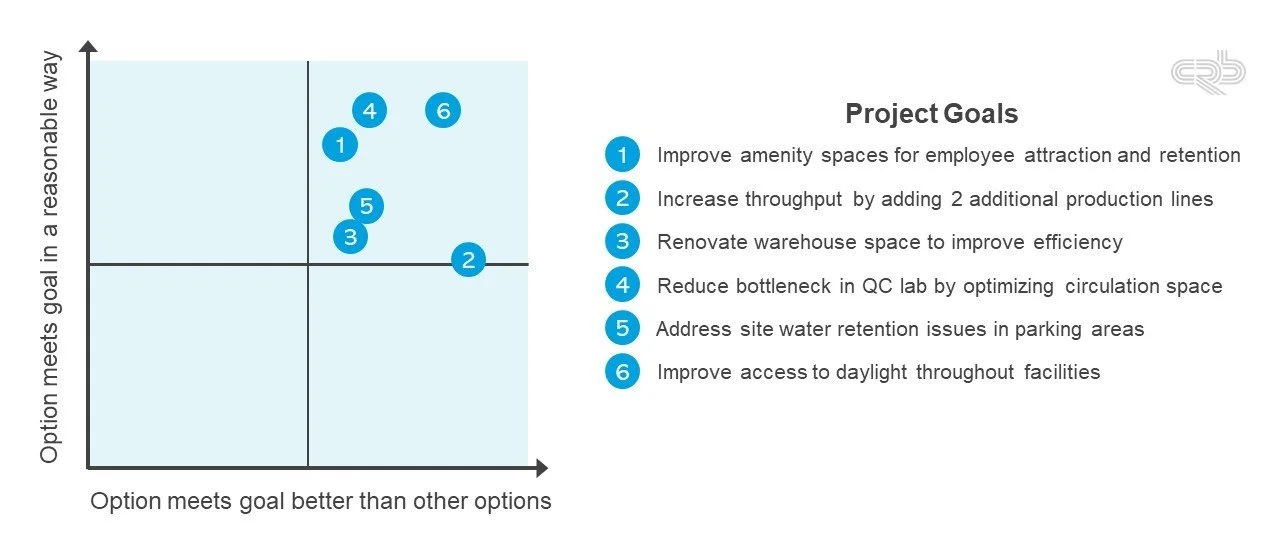CRB Strategic Facility Planners Share Tips for Your Next CapEx Strategy Meeting
Sydney Hamilton
Credit: CRB
Lab Design News spoke to Sydney Hamilton and Chelsea Stramel, strategic facility planners at CRB, about the ins and outs of meeting with your strategic planner on CapEx prioritization.
LDN: Could you please start by introducing yourselves?
SH: I'm Sydney Hamilton; I lead CRB’s Strategic Facilities Planning team, and I have three parts and pieces to my job. The first is on strategic planning projects, guiding that process. I'm also active in business development for our team and for our consulting services division at large, including strategic facilities planning, computational fluid dynamics, operations improvement, and Industry 4.0. The third part, which is kind of my favorite part, is to educate people on what strategic facilities planning is and how it can help organizations.
Chelsea Stramel
Credit: CRB
CH: My name is Chelsea Stramel. I am also a strategic facilities planner here at CRB. I get to really just dive in and focus on project work and being an advocate for SFP (strategic facilities planning) at CRB.
I started at CRB as an architect. I was really drawn to all of this science and cool stuff that CRB was doing, and a couple of years in, I found strategic facilities planning. I was like, hold the phone, you mean, I can do data analytics for architecture? Yes! So that is why I'm here. I started as an architect and just fell in love with the consulting side of things.
LDN: What is CapEx? What do we mean by that?
SH: CapEx is just short for capital expenditures. It's basically, a catch-all term that relates to budgets and funding for facilities. So, anything that a client or an organization would dedicate financially to purchasing new buildings, renovating an existing building, constructing a new building, or just maintaining and operating buildings that they already own.
LDN: How can a team-best figure out its budget in conjunction with its big-picture goals?
SH: Budgets are a very interesting question. Sometimes a client will come to the table with a budget in mind, and sometimes they need us to help them figure out what the budget is going to be, and that's going to usually be a goal-driven proposition.
We often have clients who come to us and say, 'I need to reduce my expenditure to x. How can I do that?' We really feel like the culture and the processes need to drive the budget. We obviously want to keep clients' budgets in mind, and one of our goals as strategic planners is to help people be as efficient as possible.
Our goal is budget-driven. But if they don't already have a budget in mind, we'll start with their goals. On any project, we want to always have a visioning session. We always want to get a group of stakeholders in a room, whether that's a virtual room or a physical room. We facilitate a discussion among all the different stakeholder groups. Ideally, you have good representation from leadership across the organization. You want members of the C suite in the room, and you want representation from all the different departments because we want everybody to be able to hear each other's pain points and needs relative to the company's mission.
If we can get that leadership together and discuss their pain points, then we can help them figure out what the goals are. What's the CEO's goal? What's HR's goal? What are everybody else's goals? Then, we can start to prioritize those goals as a group together, which helps build consensus among all the decision makers. And to be clear, consensus does not mean wholesale agreement across the board. It just means an understanding of why I may give a little in order for something else to be prioritized ahead of my needs.
LDN: What are your strategies for helping to identify facility demand?
CH: There's going to be a variety of ways depending on what it is that we are trying to figure out the demand for. If we are working in a facility where we are trying to make sure that labs and offices are in alignment, it might be a very square foot per headcount-driven type of calculation.
But if we are trying to figure out the demand for a facility that's changing technologies or adding technologies, that may be more operations-driven. We might team up with our operations improvement colleagues to figure out schedules and linear feet per equipment, addressing those kinds of data pieces to the sizing of the equipment.
It's going to really come down to what are the business drivers, all of the things that Sydney just talked about. Where is your alignment? Where are your drivers taking you? Then we can dive into the benchmarks and the data for all of those different space types. We can touch everything from the holistic space portfolio or go all the way through your amenity spaces and your circulation building surfaces. Or we might be focusing on just the big picture items for a specific lab group, and we're just touching lab or just touching manufacturing. There are a lot of different ways to find that demand depending on which part of the facility we're focusing on.
SH: We can model different scenarios. Maybe a company is not sure if some of their more knowledge-based workers are interested in hybrid or teleworking. We could model different scenarios that have different ratios of telework days per week in the office and help figure out how that might affect their office space needs. We can model different shifts of work in a manufacturing facility. For example, if you have two shifts that last a certain number of hours, what is that going to do to drive the demand on the manufacturing facility? What's going to happen to say, your locker rooms when the shift changes, and all of a sudden, twice as many people are in those facilities? We can model that. How's that going to affect your parking during those shift changes? So, there’s a lot of different scenario modeling that we can provide to help you understand the implications on facility needs.
LDN: How do you decide which projects move forward when you have a limited budget? Which ones are canceled or deferred?
Credit: CRB
SH: The short answer is we don't decide. We help the client decide. We do that through the facilitation of conversations. We have all kinds of different tools that we use to do that, and they're going to be tailored for the different clients depending on their culture or the way that they approach solutions. We might bring gaming exercises to a workshop, where we have them physically move little game pieces around on a map that represents their site. Or, we might do some sort of psychological exercises where we have each other imagine a day in the life of each other's job. We also go through exercises where we have a democratic process of prioritizing goals. ‘Everybody tell me what your goals are. Let’s all put our goals on the table, let's all put them up on the board and talk about them. Then let's vote. Let's vote on which ones we think are the most important.’ Once we have the right mix of people talking, it's fascinating to me how often you find the HR person ends up voting for the manufacturing goal first, for example, or something else along those lines. That helps sort through and prioritize things. Then, that helps outline the roadmap of the sequencing of the implementation plan for all the different projects. The goal, of course, is that consensus building and aligning messaging throughout the entire organization that here's the change that's coming, here's why it's coming, and here's why we all support it the way that we do.
LDN: How should a client prepare for a meeting to discuss their project? What sort of questions should they ask themselves?
SH: You don't necessarily need formal projections of any kind. We don't need to know formal pipeline projections, we don't need to have headcount projections, and we don't need you to have a formal business plan —that's part of why you've asked your consultant to come to the table, to help you with your master plan.
If you have some ideas about those things, I think that matters, but they're certainly not critical. What you do need to have is buy-in from leadership. We have a lot of clients who come to us, and they think,' Well, I just need you to put together the plan, and then I'll tell the leadership what came out of it.' That's going to be problematic in most cases. I don't want to say it's an absolute non-starter, but we would certainly encourage an organization to make sure that there's buy-in from leadership. It's also good to have some kind of project ambassador. Be prepared to participate in the process and bring ideas to the table. Be ready to have discussions and dedicate some time during the planning process.
LDN: Is there anything else that you'd like to add or mention?
CH: [I do not want] people to think there has to be a quantification to anything. I think that's why you bring a planner to the table because we're great at turning your qualitative requests into something quantitative. So, if you've got an idea, you're ready to start planning, don't be scared of it. If you've got questions, that's a great time to reach out to a planner. Don't try to figure it out before you work with your planner because all of those little nuances that you try to work through are great for us to know and understand. Your thought process, what you're going through, what you're excited about, and what you're nervous about are all great to have.
There are definitely those points where you need some data because we love for it to be data-driven; everybody loves for plans to be data-driven. You can see where you’ve come from, where you're going, how to track it, and all that fun stuff, but don't get nervous if you don't have it. That's why we're here to help you.
Credit: CRB




